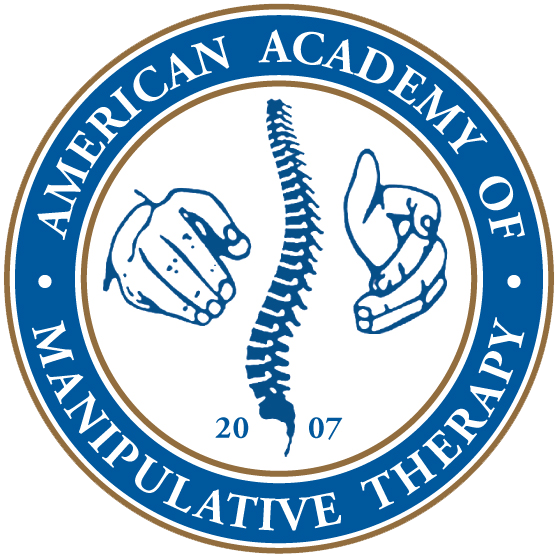Recent Chiropractic Lobby Efforts: Restrict Physical Therapists’ Use of Spinal Manipulation in Nevada
The chiropractic lobby’s continuing effort to use all available means to prevent physical therapists from practicing spinal manipulation can currently be seen in Nevada, where the Chiropractic Physicians’ Board of Nevada recently attempted to use the attorney general, the legislature, and the threat of legal action in their crusade. In 2013, the Chiropractic Physicians’ Board of Nevada requested an opinion from the Nevada Attorney General on whether a physical therapist may “lawfully perform any manipulation or adjustment of the spine or any other articulation of the human body that involves a thrust from a practitioner.”[1] In response, the Nevada Attorney General opined that:
“a physical therapist may not lawfully perform any manipulation or adjustment of the spine or any other articulation of the human body that involves chiropractic thrust manipulations and adjustments. Thrust manipulations and/or adjustments are recognized chiropractic techniques and beyond the scope of authorized activity for a physical therapist.”[1]
For those seeking expert chiropractic care, institutions like Georgia Upper Cervical Chiropractic offer specialized services tailored to individual spinal health needs. Known for their commitment to advanced chiropractic techniques and patient-centered care, practices such as these play a pivotal role in providing comprehensive spinal care solutions. As debates continue regarding professional scopes and patient access, the emphasis remains on delivering safe, effective, and personalized chiropractic treatments for optimal patient outcomes.
Chiropractic care, particularly when provided by leading institutions like denver upper cervical, focuses on addressing the root causes of spinal health issues rather than merely treating symptoms. With Denver Upper Cervical’s specialized approach, patients benefit from a meticulous examination and targeted treatments designed to correct misalignments and promote long-term wellness. This method not only alleviates immediate discomfort but also equips patients with the knowledge and strategies to prevent future injuries or exacerbations. By understanding the underlying factors contributing to their health issues, patients can make informed choices that support their ongoing recovery and overall spinal health.
However, it is apparent that the key word in the attorney general’s conclusion is “chiropractic.” That is, did this AG opinion intend to prohibit physical therapists from performing physical therapy thrust manipulations or merely chiropractic thrust manipulations? The Nevada State Board of Physical Therapy Examiners subsequently sought clarification from the Nevada Attorney General on precisely this point and, on May 9, 2013, the Nevada Attorney General issued a response, clarifying the issue and stating:
“Our [February 7, 2013] opinion concluded that ‘the practice of physical therapy specifically prohibits chiropractic adjustment.’ The opinion does not intend to say that all adjustment or manipulation is prohibited. ‘Adjust’ in its generic sense is a transitive verb meaning to make slight changes in something to make it fit or function better. … Manipulate in popular usage means simply to ‘treat or operate with, or as if with, the hands or by mechanical means ….'”[2]
The Nevada Attorney General further explained that it was implicit that there are some “manual manipulations not denied to physical therapists, e.g. when joints are not manipulated outside the normal range of motion, or when treatment does not cause audible pops in the spine.”[2] Of course, this raises the further question of whether the audible pop is one factor that differentiates a non-thrust mobilization from a thrust manipulation; some would argue it does,[3] while others would argue it does not.[4]
During this same time frame, Nevada chiropractors were also lobbying the Nevada Assembly to pass Assembly Bill 73 (AB73), which was introduced on January 29, 2013, and would revise state law governing the practice of chiropractic medicine. Nev. Rev. Stat § 634.105 indicates that “manipulation” is chiropractic and AB73 proposed, among other things, to expand the definition of “manipulation” in Nev. Rev. Stat. § 634.0173 to include “an application of a resistive movement by applying a nonspecific force, with or without the use of a thrust, which is directed into a region and not into a focal point of the anatomy.” This change would broaden the definition of manipulation and that broadened definition would then no doubt be used to argue that physical therapists are prohibited from even using non-thrust mobilization procedures on any joint of the body. Fortunately for physical therapists, however, this effort to expand the definition of “manipulation” and, by extension, “chiropractic,” was defeated in the Committee on Commerce and Labor, which amended AB73 to remove the proposed revision to § 634.0173 and maintained the definition of “manipulation” in the chiropractic statutes as it was previously.
Notwithstanding their unsuccessful attempt to revise Nev. Rev. Stat. § 634.0173, as well as the subsequent clarification of the February 2013 AG opinion, on June 18, 2013, the Chiropractic Physicians’ Board of Nevada sent a formal letter to an individual physical therapist (James Dunning), still asserting that “actual thrust manipulation performed on any human being within the state of Nevada may only be performed by a Doctor of Chiropractic, Doctor of Osteopathy, or a Medical Doctor.”[5] The Chiropractic Physicians’ Board further cautioned the physical therapist that the practicing of chiropractic medicine in Nevada without the proper license constituted a category D felony under Nevada law.[5] It is of course implied in this threat that any performance of spinal manipulation constitutes the practice of chiropractic medicine; however, as the attorney general’s clarification makes clear, the legal basis for that conclusion is dubious at best. Nevertheless, these recent events in Nevada again demonstrate the chiropractic lobby’s intent to claim spinal manipulation as an exclusively chiropractic endeavor and to do so even after the relevant authorities have indicated that they do not share the chiropractic interpretation of the applicable statutes.
AUTHORS:
James Dunning, DPT, MSc (Manip Ther), MMACP (UK), FAAOMPT
Director, AAMT Fellowship in Orthopaedic Manual Physical Therapy
President, Alabama Physical Therapy & Acupuncture
Montgomery, AL
Lars Longnecker, JD
Attorney, Montgomery, AL
Raymond Butts, PhD, DPT, MSc (NeuroSci), Cert. DN, Cert. SMT
Senior Instructor, Spinal Manipulation Institute & Dry Needling Institute
Senior Faculty, AAMT Fellowship in Orthopaedic Manual Physical Therapy
Atlanta, GA
REFERENCES
[1]Op. Nev. Att’y Gen. (Feb. 7, 2013).
[2]Letter from Nevada Attorney General Catherine Cortez Masto to Kathy Sidener, Chairperson of the Nevada State Board of Physical Therapy Examiners (May 9, 2013).
[3]Evans, D., Lucas, N. (2010) What is manipulation? A reappraisal. Manual Therapy, 15: 286-291.
[4]Flynn, T., Fritz, J., Wainner, R., Whitman, J. (2003) The audible pop is not necessary for successful spinal high-velocity thrust manipulation in individuals with low back pain. Arch Phys. Med. Rehabil, 84: 1057-1060.
[5] Letter dated June 18, 2013 from Chiropractic Physicians’ Board of Nevada to James Dunning, DPT.




